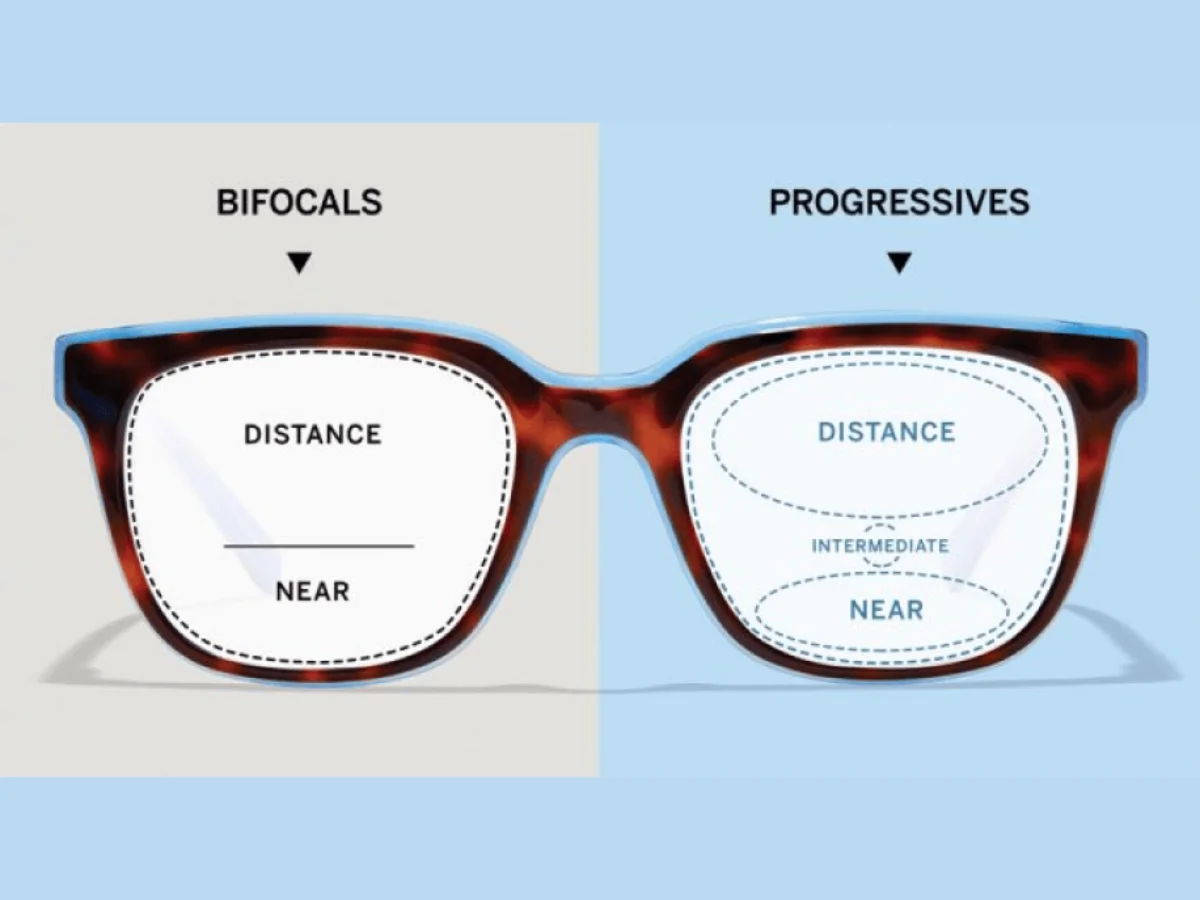Choosing the right eyeglass lenses can significantly impact your vision and overall comfort. When it comes to addressing presbyopia, a common age-related vision issue, you have several options, with two popular choices being blended bifocal and progressive lenses. In this article, we will explore the differences between these two types of lenses to help you make an informed decision.
1. Introduction: Understanding Presbyopia
Presbyopia is a natural eye condition that typically occurs around the age of 40, making it challenging to focus on close objects. To address this issue, many people turn to multifocal eyeglass lenses like blended bifocals and progressive lenses.
2. Blended Bifocal Lenses
2.1. How Blended Bifocal Lenses Work
Blended bifocal lenses are designed with two distinct sections: the upper portion for distance vision and the lower portion for near vision. There is a visible line separating these sections.
2.2. Advantages of Blended Bifocals
- Clear Division: The separation between distance and near vision is clear and provides a defined transition.
- Cost-Effective: Blended bifocals are often more affordable than progressive lenses.
2.3. Limitations of Blended Bifocals
- Visible Line: The visible line can be cosmetically unappealing to some wearers.
- Limited Intermediate Vision: Blended bifocals may not provide clear vision for intermediate distances.
3. Progressive Lenses
3.1. How Progressive Lenses Work
Progressive lenses offer a seamless transition between different prescription strengths. They have no visible lines and provide clear vision for distance, intermediate, and near tasks.
3.2. Advantages of Progressive Lenses
- No Visible Lines: Progressive lenses look like single-vision lenses, enhancing aesthetics.
- Smooth Transition: They offer a smooth transition between distance, intermediate, and near vision.
3.3. Limitations of Progressive Lenses
- Higher Cost: Progressive lenses tend to be more expensive than blended bifocals.
- Adaptation Period: Some wearers may require time to adapt to the seamless design.
4. Choosing the Right Option
4.1. Factors to Consider
- Visual Needs: Consider your daily visual tasks, such as reading, computer work, and driving.
- Cosmetic Preference: Determine whether you prefer a lens with a visible line or a seamless design.
- Budget: Evaluate your budget and insurance coverage.
4.2. Consultation with an Optometrist
To make an informed decision, consult with an optometrist or eyecare professional who can assess your visual needs and recommend the most suitable option.
5. Conclusion
In conclusion, the choice between blended bifocal and progressive lenses depends on your visual needs, cosmetic preferences, and budget. Blended bifocals offer a clear division between distance and near vision but come with a visible line. Progressive lenses provide a seamless transition but may require an adaptation period. Consulting with an eye care professional is essential for selecting the right option tailored to your individual requirements.
6. FAQs
1. Can I switch from blended bifocals to progressive lenses?
Yes, you can switch, but it may take some time to adapt to progressive lenses’ seamless design.
2. Do progressive lenses work for all vision tasks?
Progressive lenses are versatile and suitable for most daily visual tasks, including reading, computer work, and driving.
3. Are progressive lenses covered by insurance?
Some insurance plans may cover progressive lenses, but it’s essential to check your specific coverage.
4. Are there age restrictions for using progressive lenses?
Progressive lenses are suitable for individuals of various ages, but they are often chosen by those experiencing presbyopia, typically over the age of 40.
5. Do I need a prescription for blended bifocal or progressive lenses?
Yes, you will need a prescription from an optometrist or eyecare professional to order either type of multifocal lens.
Read More: https://www.rozyjos.com/
More Related:
Does Progressive Raise Rates After 6 Months?
How Much Will My Insurance Go Up with an At-Fault Accident: Progressive Insights
Sword Art Online Progressive vs. Original: Unraveling the Differences
How to Change Your Progressive Auto Insurance Payment Date
How Much Does Car Insurance Go Down After 1 Year of No Claims?
How Long Does It Take for Insurance to Go Down for New Drivers?

